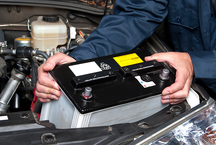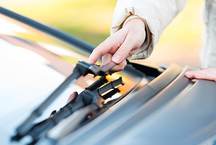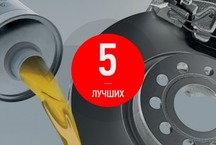Top 5 bearing lubricants
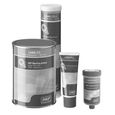



Fortunately, the times when, among the available options for greases, was at best a litol, were long gone. But abundance also has a reverse side: you always want to choose the best, and to understand the many names is not so simple. Well, let's try to sort the tubes that can be found on the shelves of stores, and choose the best lubricants for bearings.
For convenience, we introduce two categories that are most in demand in practice:
- General purpose greases (the classic example is the same lithol) - this is an excellent choice for lightly loaded mates operating in a narrow temperature range. The simplest example is the sleeves of bicycles: both the turns and the loads are small, at low temperatures the equipment is not used, the sleeves are not subjected to overheating either.
- Lubricants for high loaded connections usually have lower kinematic viscosity, allowing them to better penetrate into friction pairs. Also increases the content of antifriction additives, their quality. This lubricant can already be stuffed into tapered wheel bearings of a car, it can be used when servicing wheel bearings on cross-country motorcycles (even sealing doesn’t save it - after a pair of pressure washers in a bearing, it is worth replacing the lubricant if you want to count on the resource).
| Category | A place | Name | Rating | Price |
|---|---|---|---|---|
| The best general purpose lubricants | 1 | GAZPROMNEFT EP 2 | 9.5 / 10 | 175 |
| 2 | Muc-Off Bio Grease | 9.3 / 10 | 960 | |
| The best lubricants for high-loaded compounds | 1 | LIQUI MOLY LM 50 | 9.7 / 10 | 750 |
| 2 | SKF LGWA 2 | 9.6 / 10 | 912 | |
| 3 | Motul Tech Grease | 9.4 / 10 | 460 |
The best general purpose lubricants
|
GAZPROMNEFT EP 2
175
“Cheap and angry” is the best definition for lithium grease from Gazprom. At its core, this is all of us familiar Litol-24, but with a modified additive package and a more stable viscosity. Hence, the extended operating range - in comparison with lithol, operable up to 120 degrees of heating, Gazpromneft lubricant can withstand all 130 (some, but these 10 degrees may not be enough). In addition, it was possible to improve and resistance to water - we recall that the ancestor of domestic lithium greases in a wet environment showed aggressiveness to aluminum alloys. Given the affordable price (indicated for a tube of 0.35 g), EP 2 is worthy of taking its place in the workshop - and a place in the ranking of the best lubricants for bearings (rolling, etc.). Main advantages:
Minuses:
|
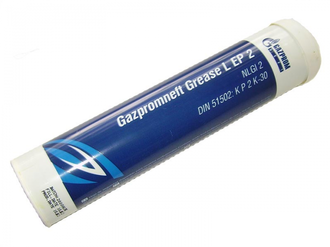 9.5 / 10
Rating
Reviews
When lubrication is inexpensive - sometimes it is easier to change it more often. So my Gazprom lubricant is always in the workbench. |
|
Muc-Off Bio Grease
960
In tune with the times, lubricant manufacturers are starting to worry about ecology. The prefix "Bio" in the title indicates to us that we have a biodegradable lubricant. The manufacturer intends it primarily for bicycles, but you can successfully use Bio Grease in any other lightly loaded unit. The moderately dense composition penetrates perfectly into friction pairs and is resistant to water, which many molybdenum disulfide-based lubricants cannot boast. Packaging in a plastic tube is most convenient for use, the residue in the emptied container is minimal. After work, the lubricant is easily washed off with a hand with a cleaning agent, but with soap it will have to work: by the way, this is a good test for durability. Of course, you have to pay for quality: the price of a Muc-Off lubricant is far from budget. Main advantages:
Minuses:
|
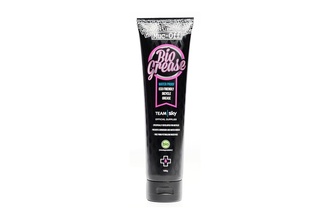 9.3 / 10
Rating
Reviews
I have been using it for a long time, and I can say that compared to other bearing greases that I used before, it works significantly better. |
The best lubricants for high-loaded compounds
|
LIQUI MOLY LM 50
750
This time the German concern changed its traditions - there is no difficult to pronounce name in German on the package. Obviously, even they thought it was redundant to “radaverhokhtemperatraftt”, and Liqui Moly high-temperature grease for wheel bearings is simply called LM50. The minimum packing is 0.4 kg, but for motor enterprises and other large consumers there is also a package up to 25 kg. LM50 is guaranteed to retain lubricating and extreme pressure properties in the temperature range from -30 to 160 degrees. In addition to wheel bearings, it can work fine in cardan crosses and other sealed needle bearings, plain bearings. The lubricant is not only perfectly kept in pairs of friction, but also resistant to leaching. Taking into account the quite affordable price (indicated for a tare of 0.4 kg), it can be safely called the best lubricant for bearings (hub, etc.). Main advantages:
Minuses
|
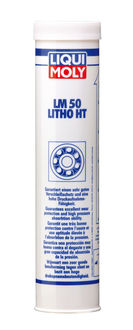 9.7 / 10
Rating
Reviews
For all the time of our service lubricants Liqui Moly always confirmed their quality. |
|
SKF LGWA 2
912
Special grease, produced by one of the world's leading manufacturers of bearings, could not deserve a worthy place in the rating. The basis of LGWA 2 is mineral oil, thickened with lithium additives. However, this is by no means a lithol: in its extreme temperature resistance, it becomes the leader in the rating of the best lubricants for bearings (peak operating temperature — 220 degrees), although Liqui Moly should be preferred for long-term operation at high temperatures. The important moment is the excellent moisture resistance of the lubricant, one of the best in its class. Choose LGWA 2 to work in difficult conditions, with high loads would be the right decision. There is only one drawback: if you can easily find the remaining lubricants in the rating in any auto shop, then SKF will have to be searched. Taking into account the price (specified for 400 g), LGWA 2 will have to be given second place. Main advantages:
Minuses:
|
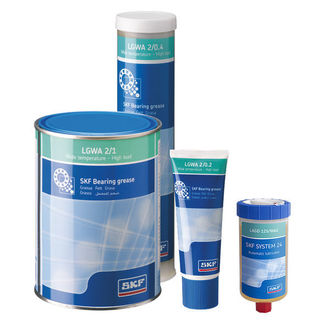 9.6 / 10
Rating
Reviews
SKF quality is something you can trust. Especially grease, which is laid in their bearings at the factory. |
|
Motul Tech Grease
460
Motul multifunctional grease is a medium between SKF and Liqui Moly in its operating temperature range. The price of the French lubricant is in fact the highest - this is given for a tube of 200 grams, so it surpassed the LGWA 2, albeit slightly. To some extent, this is justified by the use of a semi-synthetic base instead of a mineral base, and the lithium complex is also responsible for the antifriction properties. Due to its anti-corrosion properties, Tech Grease is one of the leaders in its class, which, combined with excellent moisture resistance, becomes a good recommendation for working in difficult conditions. But the extreme pressure properties here are worse than those of Liqui Moly, and given the fact that we consider lubricants in this category precisely as designed for high loads, Tech Grease takes third place in the aggregate of all characteristics. Main advantages:
Minuses:
|
 9.4 / 10
Rating
Reviews
It so happened that in my work I use almost the entire Motul line. And the greases are excellent. |
Minute materiel
We already mentioned the basics of lubricants in passing, but it would be nice to explain their differences in the end.
- Lithium grease - the most widely represented on the modern market. This is not surprising - they have good adhesion to surfaces, pronounced extreme pressure and antifriction properties. Introducing an additional package of additives or using a complex basis, you can achieve a wide temperature range of operation.
- Molybdenum Disulfide Lubricants (for example, the majority of lubricants for CV joints) can work under considerably large loads, but they quickly lose properties when water enters. It is not for nothing that car grenades wear out literally in front of the destruction of the outer boot.
- Silicone grease have excellent penetrating properties, repel water, but under high loads they have not yet been taught to work.
- Graphite (to be more precise, graphite-calcium) lubricants, their main difference is that they partially preserve their properties even when the base is dry: fine graphite flakes begin to work. But for high loads and speed graphite lubricant can not be used.
